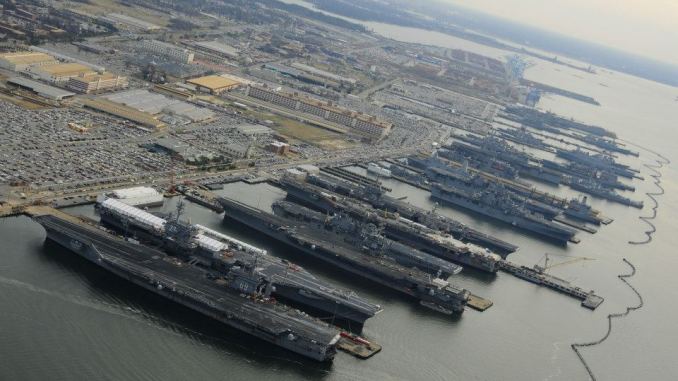
The photographs in this post, just released by the U.S. Naval Air Forces Facebook page, are impressive for a lot of reasons.
First, they provide what we could call an indirect “show of force”: there’s so much naval power (including USS Eisenhower, just returned from its last deployment) docked at Naval Station Norfolk that it’s hard to believe Washington will ever be scared of the only Chinese aircraft carrier currently at sea.
Second, it seems to suggest that the U.S. has not learned much from Pearl Harbor attack. Even though an aerial raid on Norfolk would probably be not easy (nor does it appear to be likely), the impressive line-up of flattops in the most important American naval station raises the question: is it better to concentrate or disperse?
I thought that Dec. 7, 1941, had shown that military targets have to be dispersed to be protected against (aerial, missile or terrorist) attacks. But the stunning photographs taken at Norfolk most probably prove that dispersion is not a requirement of modern scenarios.




